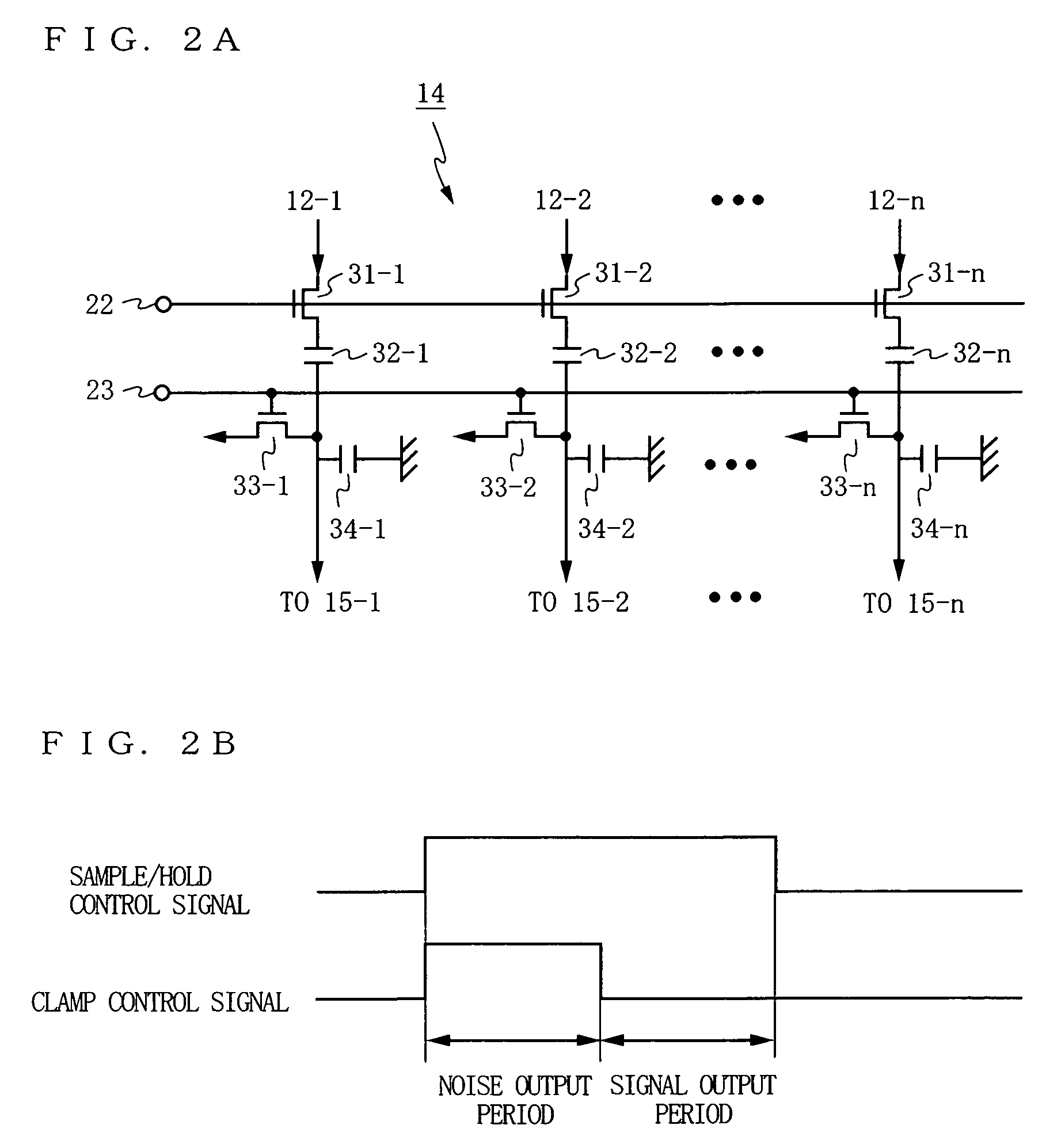Solid-state imaging device driving method
a solid-state imaging and driving method technology, applied in the direction of color television details, television systems, radio control devices, etc., can solve the problems of difficult signal processing, and achieve the effects of low noise, stable potential of each pixel, and low nois
- Summary
- Abstract
- Description
- Claims
- Application Information
AI Technical Summary
Benefits of technology
Problems solved by technology
Method used
Image
Examples
Embodiment Construction
[0028]FIG. 1 is a circuit diagram of a sensor according to an embodiment of the present invention. The sensor shown in FIG. 1 has photosensitive cells (the portions surrounded by dotted-lines) arranged in an m×n matrix form; a power supply line 10; a vertical shift register 11; n vertical signal lines 12-1 to 12-n; n load transistors 13-1 to 13-n; a noise suppression circuit 14; n horizontal transistors; and a horizontal shift register 16. Each photosensitive cell includes a photodiode 1, a transfer gate 2, a floating diffusion layer portion 3, an amplifying transistor 4, and a reset transistor 5. The photosensitive cell is characterized in that it includes three transistors (the transfer gate 2, the amplifying transistor 4, and the reset transistor 5) and does not include an address transistor. The values of m and n in an actual sensor are in the order of from several tens to several thousands.
[0029]The m×n photosensitive cells are formed on a semiconductor substrate. More specific...
PUM
 Login to View More
Login to View More Abstract
Description
Claims
Application Information
 Login to View More
Login to View More - R&D
- Intellectual Property
- Life Sciences
- Materials
- Tech Scout
- Unparalleled Data Quality
- Higher Quality Content
- 60% Fewer Hallucinations
Browse by: Latest US Patents, China's latest patents, Technical Efficacy Thesaurus, Application Domain, Technology Topic, Popular Technical Reports.
© 2025 PatSnap. All rights reserved.Legal|Privacy policy|Modern Slavery Act Transparency Statement|Sitemap|About US| Contact US: help@patsnap.com



